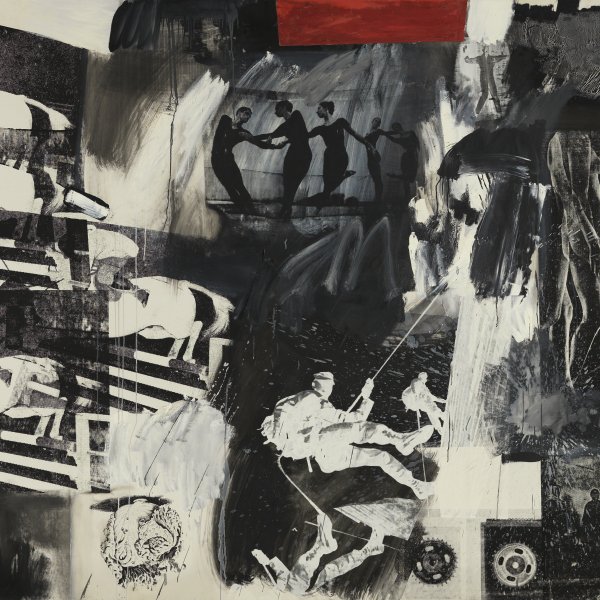Juan Gris Cockatoo No. 4
Joseph Cornell’s deep admiration for the oeuvre of Juan Gris may have been the cause of his shift away from Surrealism and gradual espousal of the Cubist language. The influence of the Cubist painter’s crystalline compositions and use of collage began to be visible in the mid 1950s. Cornell, who was more of a poet than a visual artist, in addition to collecting all kinds of artefacts from which to construct his works, worked intensely on small scrapbooks containing notes or cuttings on themes that interested him. His fascination for Gris spurred him to compile a scrapbook devoted specially to the painter, in which he collected cuttings on the latter’s work, mixed with notes of his own, that provided him with a basis for some of his own constructions.
Juan Gris Cockatoo No. 4, dated around 1953–54, belongs to a set of boxes executed as a tribute to the Spanish artist, in which the central motif is a peculiar image of a cockatoo that has been cut out and glued to a wooden support and is surrounded by a few Cubist motifs and media. In the present work, Cornell has added to the cockatoo the silhouette of its shadow cut out of black paper; it may be inspired by the shadow of the human figure in Juan Gris’s painting Man in a Café, of 1914, which was first shown at the Sidney Janis Gallery in New York in 1953 and is mentioned in the artist’s notes.
A chronicle of “the cycles of Venus” in the background collage made from cuttings from a yellowed newspaper of 1878, which also covers the back of the box, reflects Cornell’s interest in astronomy. He included various constructions alluding to the constellations in the exhibition of his work at the Stable Gallery in 1955.
Although it is not always easy to decipher the obscure symbology of a scholarly, labyrinthine mind like Cornell’s, it is difficult not to relate this bird confined to a glass case to the reclusion of Cornell himself, a rara avis on the American art scene.
Paloma Alarcó







